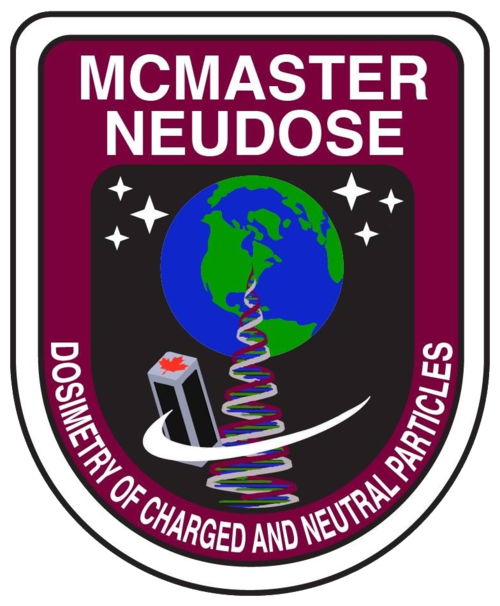NEUDOSE's radiation detector has different components that produce different signals. This means that various radiation detector electronics are required. Milan, an electrical engineering student, is presenting his work on the design of the electronic readout board that incorporates different components such as pre-amplifiers, amplifiers and Analog-to-Digital Converters (ADCs).
Anti-Coincidence Detector Simulations
Alex, an engineering physics student, has been busy simulating the behavior of the Anti-Coincidence Detector (ACD) which is a major component of our radiation detector. Alex presented his findings to the group at our meeting this week which included the detector response as a function of incident radiation direction. Alex performed the simulations using GEometry And Tracking 4 (GEANT4).
NEUDOSE Learning Together
Since the students of NEUDOSE come from many different backgrounds, each member brings with them a unique set of skills. This provides a great opportunity for team members to learn from one another. Marc, an electrical engineering student, ran a tutorial to teach other team members how to design Printed Circuit Boards (PCBs) in different computer programs. Many subsystems of NEUDOSE will be required to design PCBs for the satellite to function. This proved to be a fantastic way to share practical knowledge!
Back to business!
It's back to business with a full meeting once again!
Thank You To Our Sponsors
McMaster NEUDOSE would like to thank our current sponsors for their support in this project.
- Keysight Technologies
- Microhard Systems Inc.
- SensL Technologies
- Standard Imaging
- Physik Instrumente (PI) GmbH & Co. KG
- NovAtel
- and the Department of Medical Physics & Applied Radiation Sciences at McMaster University.
Our progress would not be possible without your help! To learn more about our sponsors or to find out more about how you can support us, please click here!
Learn More about NEUDOSE
Have you been wondering why a group of undergraduate students want to send a satellite into space? Have you been wondering what NEUDOSE even means? Check out our About section to learn exactly why!
7th European CubeSat Symposium
This past week several members of the McMaster NEUDOSE team attended the 7th European CubeSat Symposium in Liege, Belgium. A medical physics undergraduate student on our team, Richard, presented his work involving Monte Carlo simulations of our scientific instrument.
The Geant4 Monte Carlo simulations investigate the contribution of particle type and energy to the overall total dose equivalent. Detector anisotropies and instrument response functions were derived for protons, electrons, galactic cosmic rays, and neutrons. The results provide valuable information regarding the energy ranges that the radiation detector would be effective. In addition, an estimate of the expected count rate while in orbit was determined.
McMaster NEUDOSE team members are being productive all over the world!
Welcome Back! Merchandise is Coming!
McMaster NEUDOSE welcomes students back to campus! Stay tuned because NEUDOSE merchandise is coming your way!
GEometry And Tracking (GEANT) Simulations
GEometry And Tracking or GEANT is a platform that is used to simulate how particles pass through matter. The payload team has been busy creating simulations with this GEANT software to simulate how particles will interact and pass through our TEPC detector. In this animation - the path of a 100 GeV Iron Ion is shown.
Attitude Determination & Control
This is a simple block diagram of the Attitude Determination & Control System. Its just a schematic to show the general arrangement and connections of the parts of the system. The AD&C team are now working on developing and sourcing each individual part of the system. Keep checking back for further progress and updates!








